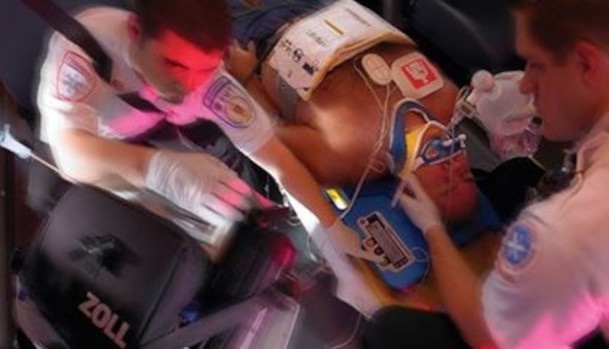
Chest Compression: mechanical or manual? A systematic review
The Resuscitation Journal published on September an Open Access article to summarise the evidence from randomized controlled trials of mechanical chest compression devices used during resuscitation after out of hospital cardiac arrest.
Five randomized trials, involving over 10,000 participants, were included. The meta-analyses found no evidence of benefit with the use of mechanical chest compression devices. Nevertheless, it is likely that mechanical chest compression devices will continue to play a role in resuscitation. But mechanical devices can deliver chest compressions where manual CPR is difficult or impossible, such as during ambulance transport, and are likely to be the best treatment option in such situations
Cardiac arrest: low survival rates
Out of hospital cardiac arrest is a major cause of death and morbidity. Survival rates are low; in the UK, only around 7% of patients in whom resuscitation is attempted, survive to discharge from hospital. A key factor that improves survival is good quality cardiopulmonary resuscitation (CPR).
The quality of CPR delivered at out-of-hospital cardiac arrest is often sub-optimal. Fatigue and the need to deliver multiple tasks on arrival at a cardiac arrest likely limit the quality of CPR that paramedics can provide.
Mechanical chest compression devices
Mechanical chest compression devices provide compressions of standard depth and frequency for prolonged periods without any decline in quality and remove the need for paramedics to provide chest compressions manually, enabling them to concentrate on other aspects of patient care.
Several different types of mechanical chest compression device have been proposed, but the main technologies are piston devices and load-distributing bands. Piston devices such as LUCAS-2 (Jolife AB, Sweden) use a piston mounted on a frame that fits around the patient’s chest.
The piston is driven up and down by a power source such as compressed air or an electric motor, compressing the chest in a similar way to manual chest compressions. Load-distributing band devices, such as AutoPulse (Zoll Medical Corporation, Chelmsford, MA), work in a different way.
They consist of a wide band that fits around the chest, whose circumference is alternately shortened and lengthened, providing rhythmic chest compressions.
Three large randomised controlled trials that compared mechanical with manual chest compression, and evaluated their effects on clinically important outcomes, have recently been reported, but not yet included in systematic reviews.
Manual or mechanical? Results of the study
The aim of this paper is to combine, where appropriate, the results from randomised trials, to estimate the effects on important outcomes (especially survival and survival with good neurological outcome) of mechanical chest compression devices used to provide chest compressions for adult patients after out of hospital cardiac arrest.
This project was funded by the National Institute for Health Research Health Technology Assessment Programme (project number 07/37/69). The views and opinions expressed therein are those of the authors and do not necessarily reflect those of the Health Technology Assessment Programme, NIHR, NHS or the Department of Health.


